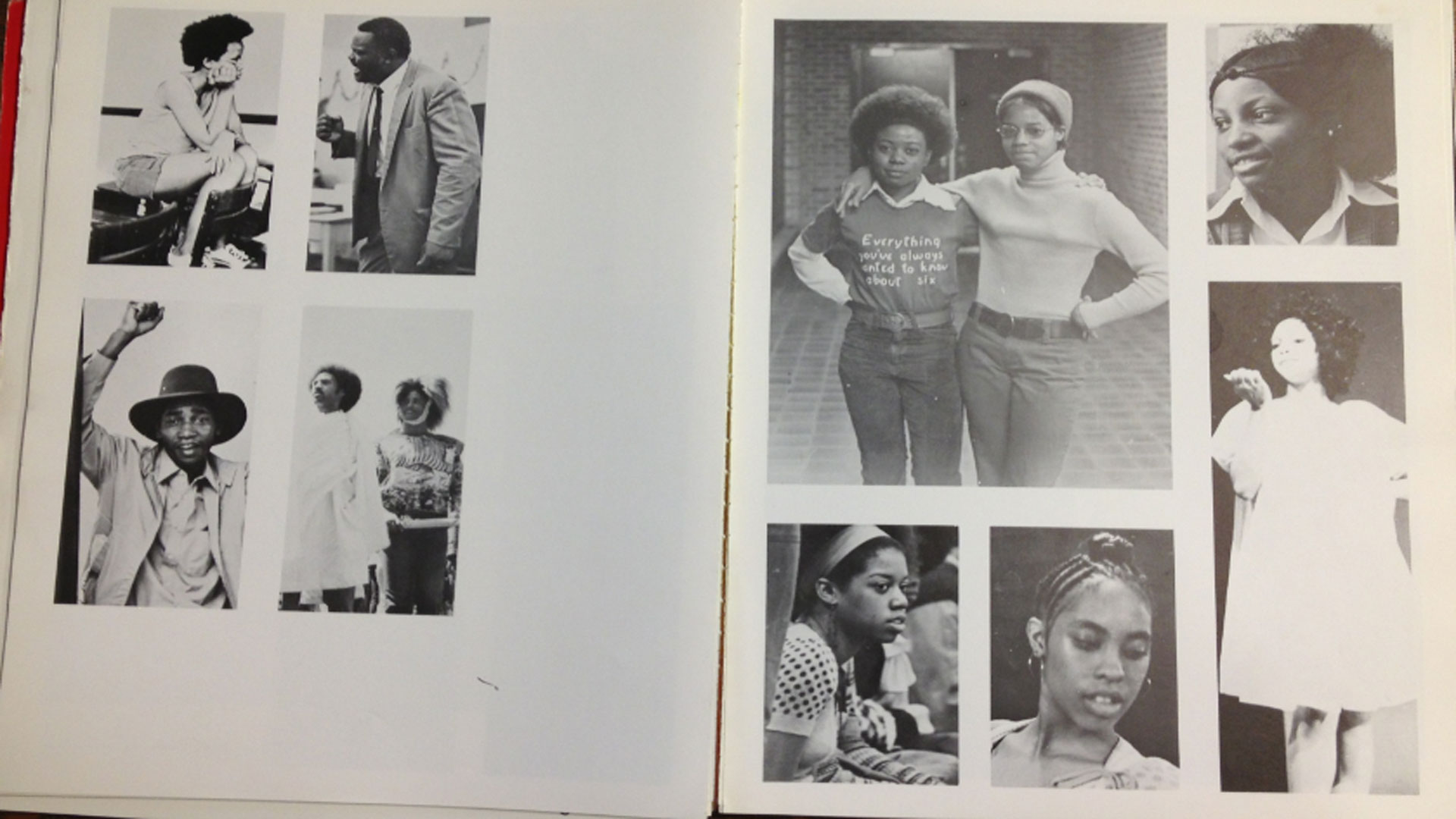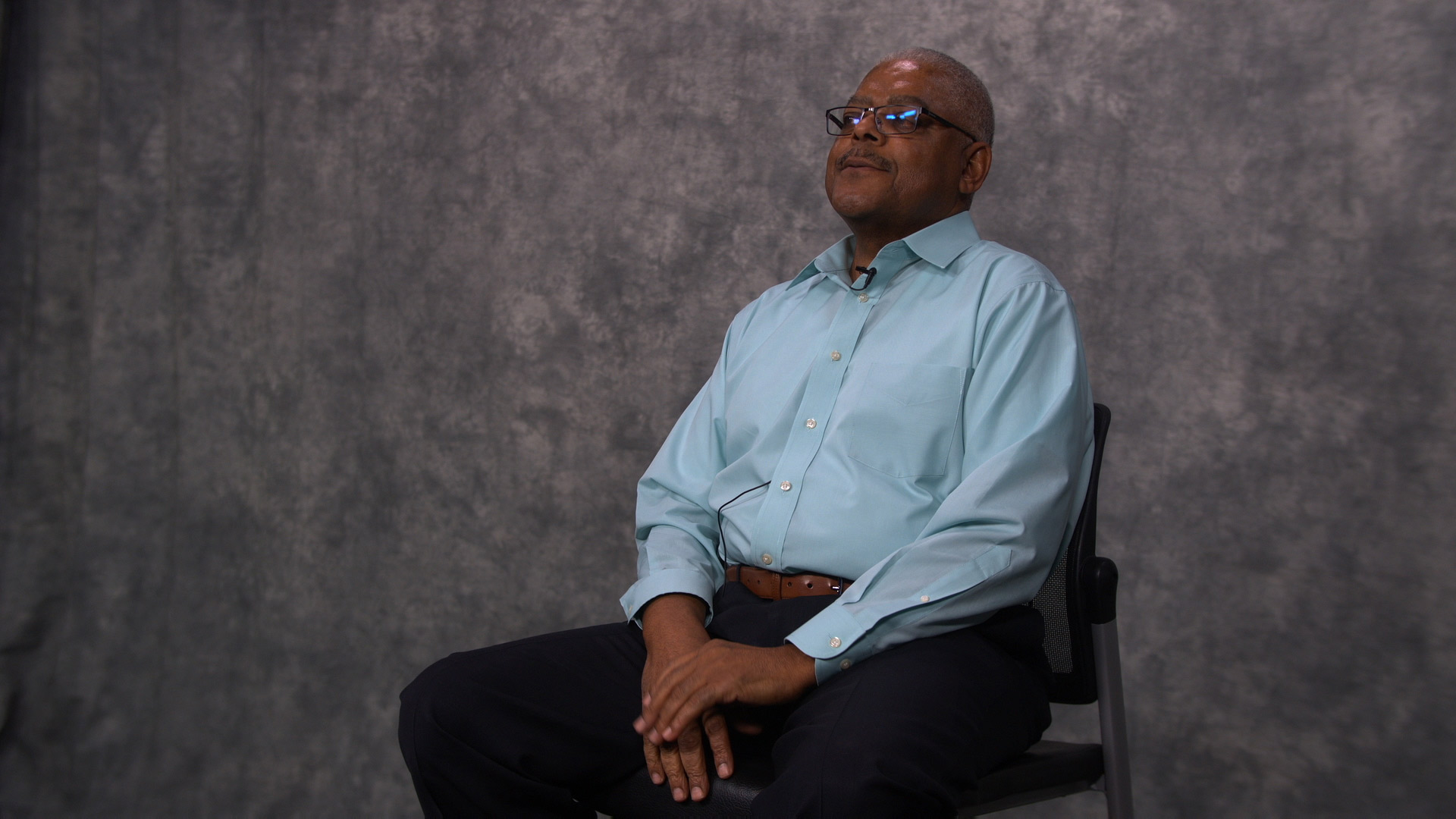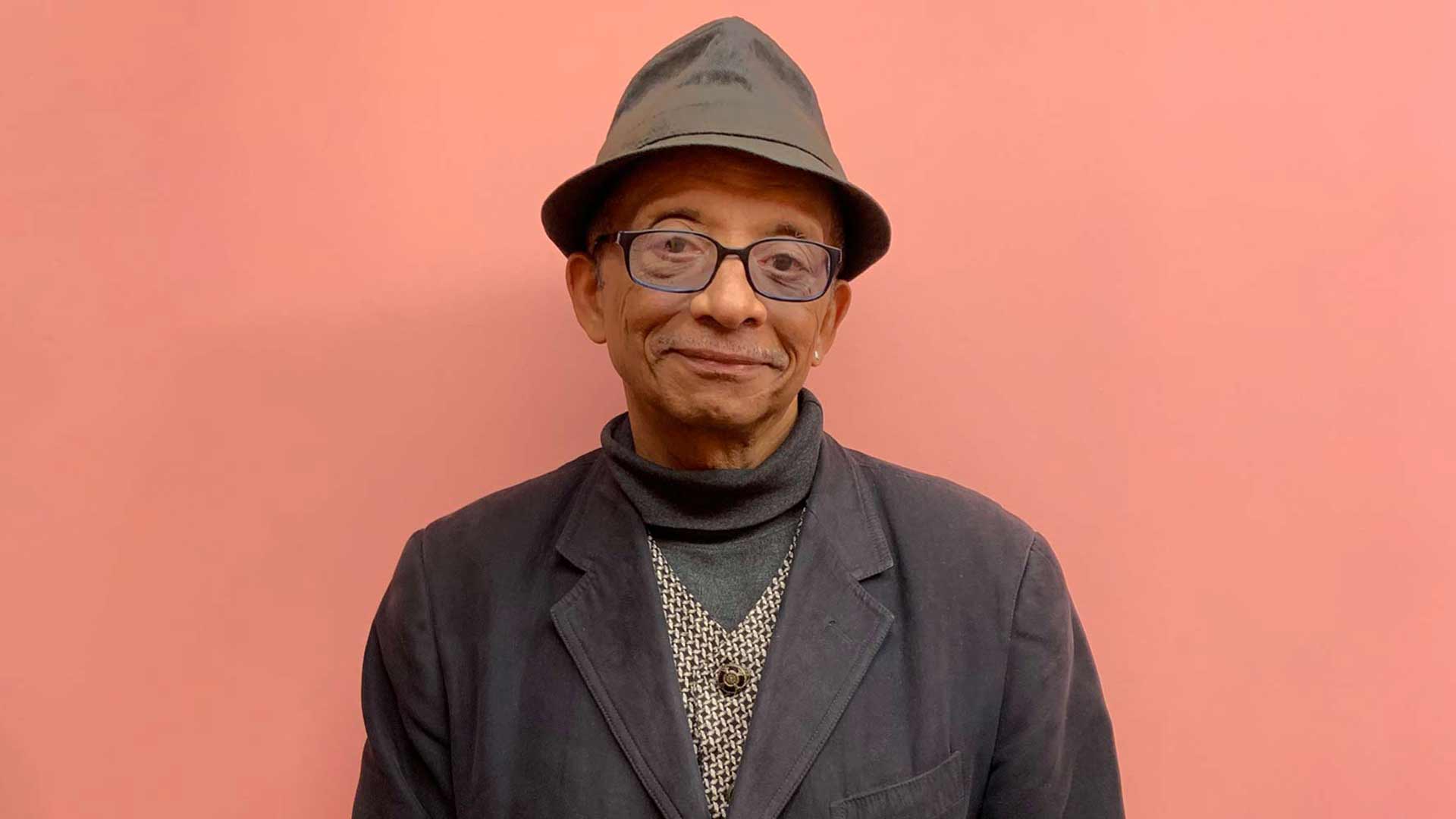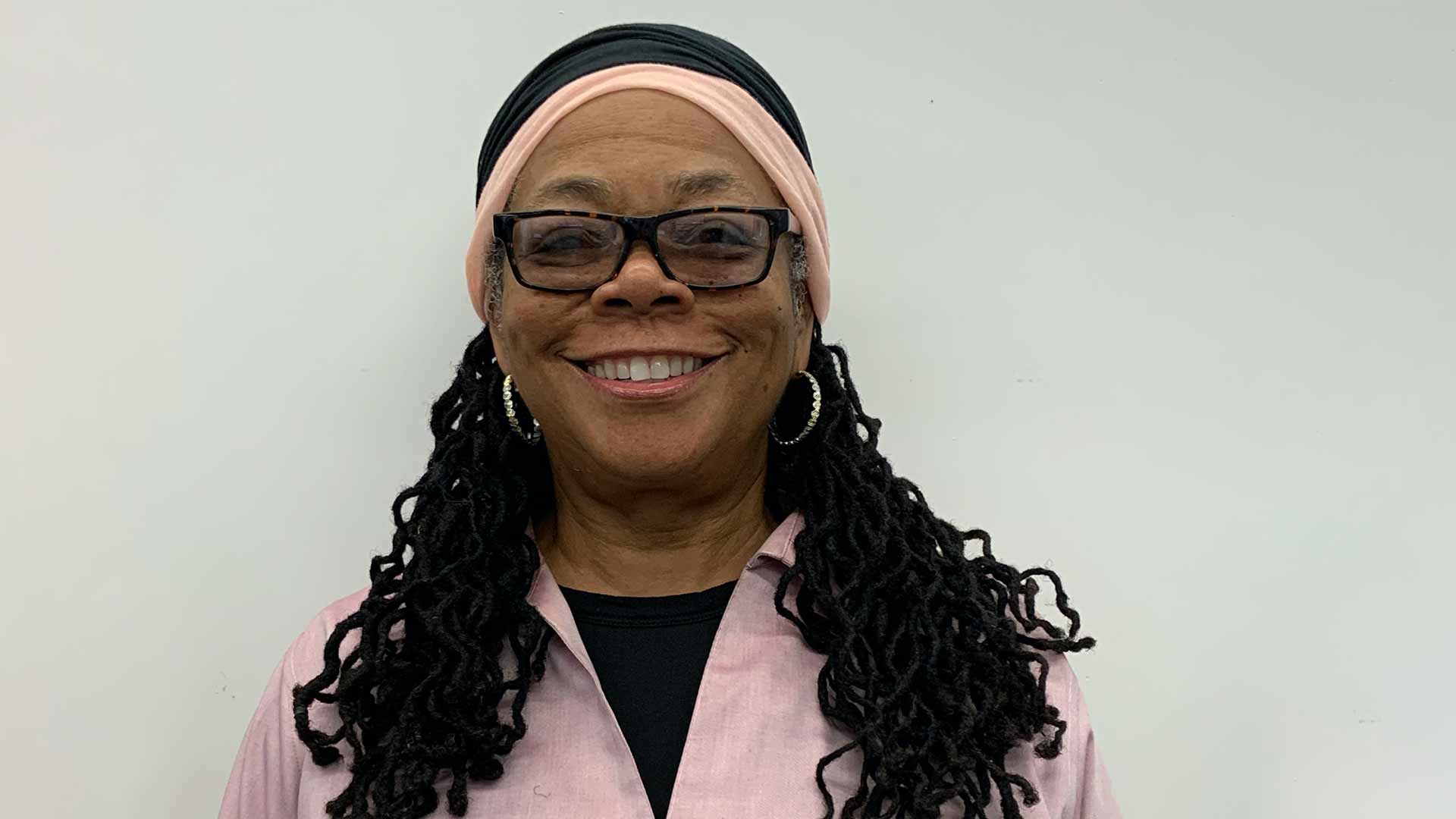
Social Dancing and Blackness at UIUC in the 1970s
- Post Date: 3/26/2021
- Author: Jennifer White, registrar
- Reading Time: 12 minute read
As part of the Spurlock Museum of World Cultures’s temporary exhibit, Blues Dancing and Its African American Roots, we interviewed alumni from UIUC and people connected with the C-U community to learn more about the social dancing they experienced in the late 1960s and early 1970s. Below we share excerpts from several former UIUC students: Victoria Bostic (BA Social Welfare, 1972), Larry Lawrence (BA Political Science, 1972), and Stan West (BA Journalism, 1973). You can hear their complete audio or video recordings at our Blues Dancing and Its African American Roots Oral Histories online exhibit, along with audio and video recordings of other interviews for this series.
The interviews that follow are excerpts from our Blues Dancing and Its African American Roots Oral Histories online exhibit.
Larry Lawrence
Larry Lawrence was born in East St. Louis, Illinois. He studied at the University of Illinois Urbana-Champaign, and in 1972, earned his bachelor’s in Political Science. He mentions Project 500, the University’s program to bring underserved students to campus. Project 500’s official name was The Special Educational Opportunities Program (SEOP). It had a fraught history, especially in its first year when the University had over half of the 565 students brought in through the program arrested and held in a makeshift jail at Memorial Stadium. The students had been protesting treatment by the University and were arrested for occupying Illini Student Lounges. For more historical information about Project 500, see the University of Illinois Archives Project 500 page (external link) and the Project 500 Online Exhibit (external link).
"...When I came here, to the U of I, okay. the program was called Project 500. That was the first time they had so many Black students on campus. And they had recruited the students [from] pretty much all over the country. So, we had people from Philadelphia, Chicago—We had some from New York. We even had some from Puerto Rico. But the bulk of them were from Central Illinois and East St. Louis areas. So then there you learn different dances and different styles. … Especially I remember the ‘Philly.’ ... It was a Slow Dance, but they called it the ‘Philly Drag.’
"...The gals from Chicago …. did what they call the ‘One Step.’ In East St. Louis, we slow-danced, but we did the ‘Two Step.’ So then, if you are out at a dance... and you asked the young lady to dance, ... you had to determine whether she’s from Central Illinois or from Chicago, because then you have to know which way to go. … [In] New York, they had their own different styles. But I think one of the main things that was beneficial for us was that every semester when they [the students] would go home, they would come back with different songs. Because everybody got different artists, you know. Chicago got their style of artists, and then Philadelphia. So then that’s how we was able to mix it all up—and then from there that's how you learned the different dance styles....
"… and we used to have, here at U of I, the student Union, we would have dances. And a lot of the fraternities and sororities, they would have dances. And we would go there for that. And most of the time, those were usually, ninety percent of the time they would have DJs.
"…They had a club here. It was mixed. The Wagon Wheel was one, and then, I think KAM’s… Usually if you go to KAM’s, most girls would just group dance, pretty much. People just all over the place. They just bouncing around, like you name it, but that's pretty much it. As far as us going to dances in the community, pretty much no we did because of the rivalry that was going on at that time period…"
When asked about the racial make up of the dance events he attended, Larry responded:
"The bulk of them were just African American. But like I say, with the other Wagon Wheel and KAM's, there’s a few others that would be mixed, but it wasn’t that many. And you have to look at the content [context] of the time period. In ‘68, you know, you just had the Civil Rights Movement, the Vietnam War—there was not a lot of socializing going on among Blacks and whites. There was very little outside of protests we did. We work together during the protests, especially the Vietnam War protests. We just protested usually right in the back of the Student Union most times. We would bring in different speakers, and they would discuss. And also, they had established what we called ‘underground network’; whereby if you got drafted, and if you wanted to go, they could have you in Canada in 6 hours."
Stan West
Stan West, an author, journalist, and oral historian, came to UIUC from Chicago. He grew up in a family that often enjoyed dancing. He came to UIUC in what he calls “the second wave of the Project 500.” Project 500, as mentioned above, was a badly organized and flawed attempt by the University to bring underserved students to campus. West earned his Journalism degree in 1973.
"In Chicago, I remember basement parties would have red lights, and in Philadelphia, they had blue lights for the same reason—to reduce the visibility and make it seem cozy and romantic and kind of calm...
"...Even though I came from Chicago, I always was cool with the music, but not the lyrics. To me, the lyrics were rather depressing and apolitical. I didn’t know better. Later, I wound up understanding that the Blues was very political. Muddy Waters’s famous song, "I’m a Man," was not just swaggering braggadocio—but he was talking about how White guys in the South could not refer to grown African American males as 'boy.' That was his declaration. That was a political statement. Many of the early Blues artists—and most of them were women—were decrying sexual harassment and were talking about sexual freedom on lots of levels...
"...Folks of Color, but [and also] many whites, would also show up at our parties at the Frat house and Sorority houses and the other centers, both on campus, but also in the North End. It was fascinating that some of us [Black students] felt compelled to party in the North End, too. I was just as comfortable there as on campus. I can’t say that was everybody. I can’t even say that was most of us. But some of us felt it was a seamless transition [because it] was just folks across University Avenue. Off campus and at the North End, they were at community centers and sometimes at people’s houses, and later at bars…"
Victoria Bostic
Victoria Bostic grew up in Philadelphia, where she was part of a musical family. In 1972, she earned her bachelor’s in Social Welfare. Bostic continues to enjoy social dancing.
"…The music kind of dictated the dancing. So I don’t even know who would invent the dance. It was like, ‘this is the new dance.’ …One of my girlfriends had family in another part of the country, and she would come home [and say], ‘Oh, this is how you do the—’ And we all learned the dance on my block—on my street—we’d get in the middle of the street or the sidewalk, and you’d put the music on, and you’d dance…
" …The dancing was different for us [students] from the East Coast. Because, you know, we were mixed in with people from the Midwest. We were saying, ‘What the heck are these people doing?’ Because they didn’t dance like us. They had this dance in Chicago called...“The Walk.” They would start off as partners, and then they would separate. And one person will go over here, and the other person will go over there, and then they would come back together. And we were like ‘Really?! Is that it? Oh no, uh-uh.’ So we would bring dances back from the East Coast, and everybody wanted to learn the dances that we brought [back]. No matter where they were from—East St. Louis, Chicago, Champaign—they wanted to learn the Philly dances…. When we would go home to visit, we’d go, ‘What are they doing? Okay, let’s get that,’ Bring it back to Champaign.
"...And we had a dance called ‘the Slow Drag.’ I guess people nowadays may call it a ‘Slow Dance,’ but it was ‘Slow Drag.’ [In the Slow Drag], you’re dancing close with your partner—very close with your partner... Us females would only want to do that dance with other guys from Philly. Because the guys from other places—the largest number was from Chicago—they didn’t really know how to Slow Drag. And they thought it was like, ‘Oh! This is a chance to get close and do some little freaky stuff...’ But it wasn’t like that. You had to know how to move with your partner in order to keep it from being some freaky stuff. So we just didn’t like slow dancing with those guys. They would say, ‘You never want to dance with us!’ But [it was] because ‘you don't know how to do this.'"
-
 Pages 86-7 from Irepodun, 1973 edition. Irepodun from Project 500 (external link), accessed February 8, 2021.
Pages 86-7 from Irepodun, 1973 edition. Irepodun from Project 500 (external link), accessed February 8, 2021. -
 First two covers of Irepodun, the first African American yearbook to be published at the University of Illinois (1972 and 1973), by the Black Students Association. Irepodun from Project 500 (external link), accessed February 8, 2021.
First two covers of Irepodun, the first African American yearbook to be published at the University of Illinois (1972 and 1973), by the Black Students Association. Irepodun from Project 500 (external link), accessed February 8, 2021.
-
- Share:
- Subscribe to Newletter
- Giving




